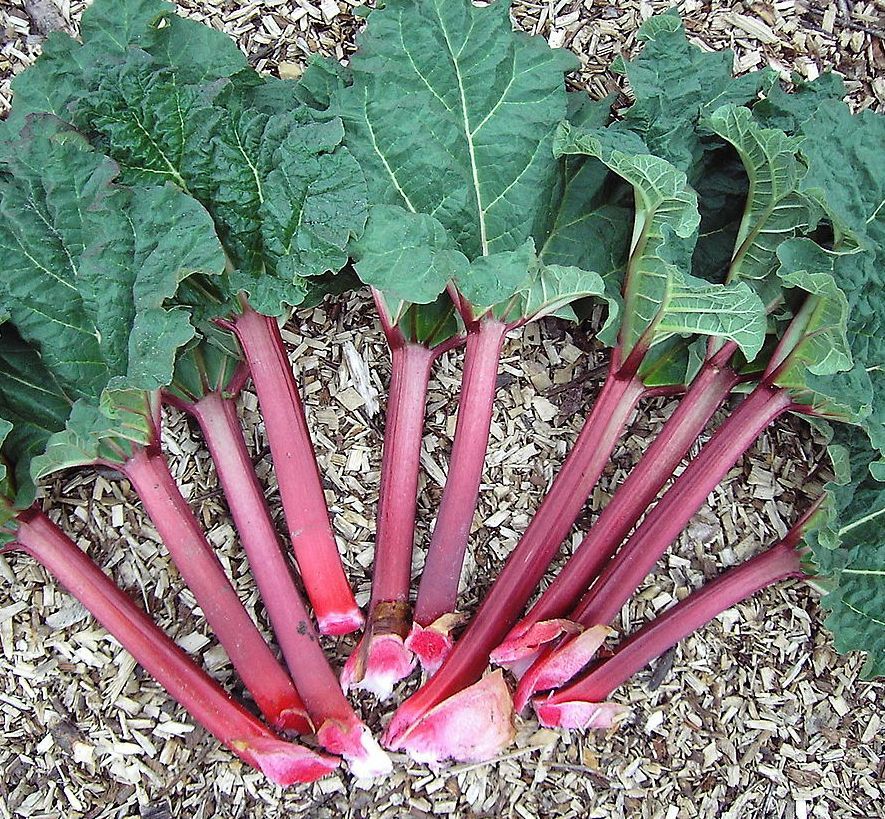Rhubarb is a popular spring vegetable that adds tart flavor to pies, jams, and other dishes. While most parts of rhubarb are edible, there are a few key times when you should avoid eating it. Here is a complete guide to when not to eat rhubarb and how to identify and handle potentially dangerous rhubarb.
Rhubarb Leaves
The most important part of rhubarb you should not eat are the leaves. Rhubarb leaves contain high levels of oxalic acid, which is toxic to humans. Consuming the leaves can cause:
- Nausea
- Vomiting
- Abdominal pain
- Diarrhea
- Difficulty breathing
- Burning in the mouth and throat
- Kidney failure in severe cases
To avoid accidental consumption always remove and discard rhubarb leaves before cooking. Never eat anything containing rhubarb leaves, like certain herbal teas. Only eat the red and green stalks.
Early or Late Harvest Rhubarb
Rhubarb is typically harvested during the spring and early summer months. However, rhubarb grown too early or too late in the season may not be safe to eat
Rhubarb stalks harvested before they have fully developed tend to be higher in oxalic acid Eating immature stalks can potentially cause symptoms like nausea or abdominal pain, Only harvest rhubarb stalks that have reached their full size
Late harvest rhubarb is more likely to have high levels of other toxins. After temperatures reach over 90°F, rhubarb may accumulate anthraquinone glycosides. These can act as a laxative and cause diarrhea if consumed. For best quality and safety, only harvest rhubarb before peak summer heat sets in.
Freeze Damaged Rhubarb
Exposure to frost or freezing temperatures can damage rhubarb stalks, making them unsafe for consumption. During cold weather, check for:
- Soft, mushy stalks
- Brown or water-soaked appearance
- Strong rancid odor
- Dead, collapsed leaves
Freezing causes ice crystals to form within rhubarb stalks. This ruptures the plant cells, allowing oxalic acid to leak out. Consuming freeze damaged stalks can lead to symptoms like burning of the mouth and throat. Always discard rhubarb that shows signs of frost damage.
Overmature Rhubarb
Allowing rhubarb to over mature before harvesting can also make it inedible. Overmature stalks will be tough, stringy, and fibrous. They will lack the tender, juicy quality of properly harvested rhubarb.
Overmature rhubarb may also split or flower. Split or flowering stalks tend to be extremely tart, bitter, and low in moisture content. This makes them unpalatable for cooking. Only harvest rhubarb stalks at their optimal maturity for best flavor and texture.
Diseased Rhubarb
Several diseases can also make rhubarb unsafe to eat. Avoid rhubarb with these disease symptoms:
- Crown rot: Brown, water-soaked areas at base of stalks
- Bacterial leaf spot: Small brown spots on leaves
- Anthracnose: Sunken black lesions on stalks
- Fusarium rot: Pink fungal growth on injured stalks
Diseased parts of the rhubarb plant may contain higher toxin levels. Only eat stalks that are completely healthy and blemish-free. Remove and destroy any diseased leaves or stalks.
Pest Damaged Rhubarb
Rhubarb stalks that show obvious signs of insect or pest damage should also be discarded. Do not eat stalks with:
- Chewed holes from caterpillars
- Small burrows from borers
- Webbing from spider mites
- Distorted growth from aphids
Severe pest damage can introduce toxins, spoil flavor, and increase the risk of diseases. Carefully check over harvested rhubarb and compost any portions showing evidence of pests.
Greenhouse Grown Rhubarb
Rhubarb grown in greenhouses may accumulate higher concentrations of oxalic acid and other toxins. The limited air circulation and humidity in greenhouses changes the growing conditions. This can alter the phytochemicals produced by rhubarb plants.
If growing rhubarb in a greenhouse, test oxalic acid levels before consuming. Only harvest greenhouse rhubarb once oxalic acid levels drop below 750 mg per 100g fresh weight. For safest results, grow rhubarb outdoors in full sun.
Safe Handling of Rhubarb
When handling and preparing rhubarb, follow these tips to stay safe:
- Wash all stalks thoroughly before cooking.
- Only use stalks that are firm, crisp, and bright red colored. Discard any dull or limp stalks.
- Trim off all leaves at the base of the stalk. Discard leaves – do not compost.
- Cut away any blemished, damaged, or discolored portions of stalks before cooking.
- Never eat rhubarb raw. Always cook stalks before eating to help reduce oxalic acid levels.
- Avoid rhubarb if you have kidney issues or a history of kidney stones. The oxalic acid may exacerbate problems.
While rhubarb stalks are perfectly edible when harvested and prepared properly, there are certain times when it is safest to avoid eating them. By removing toxic leaves, picking healthy stalks at their prime, and discarding any damaged or diseased rhubarb, you can safely enjoy this tart spring vegetable. Follow the guidelines above to identify and handle rhubarb that may not be suitable for consumption.
When can you not eat rhubarb?
FAQ
What months can you not eat rhubarb?
When should you not pick rhubarb?
How to know if rhubarb is safe to eat?
Is rhubarb safe to eat all summer?
- The Ultimate Guide to Growing Strawberries in Raised Beds - August 8, 2025
- No-Dig Garden Beds: The Easiest Way to Grow a Beautiful Garden - August 6, 2025
- How to Protect and Preserve Wood for Raised Garden Beds - August 6, 2025

